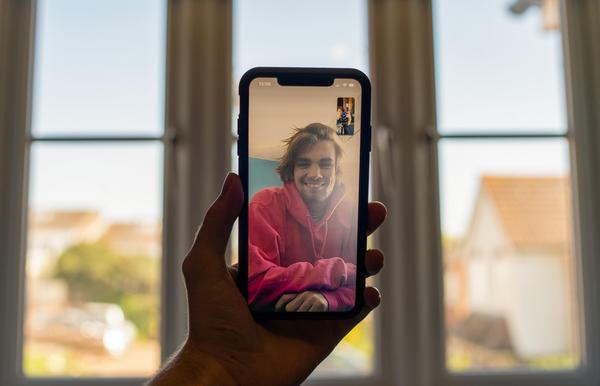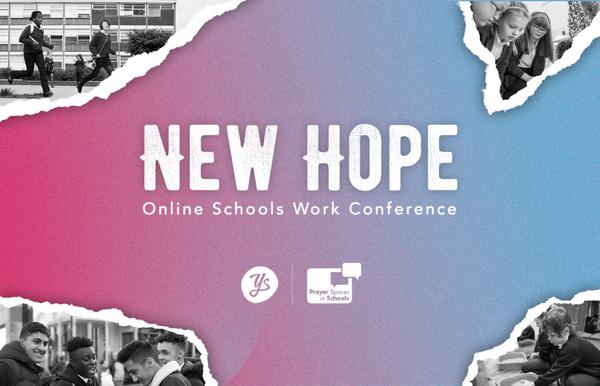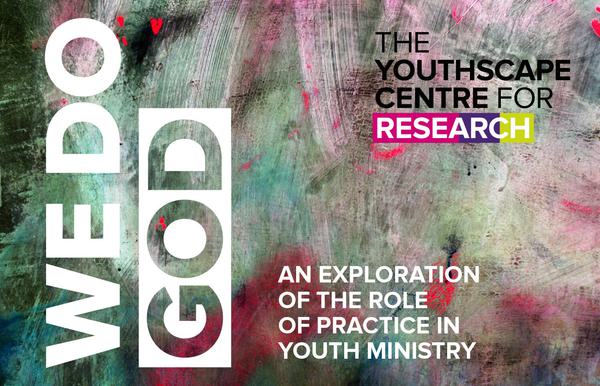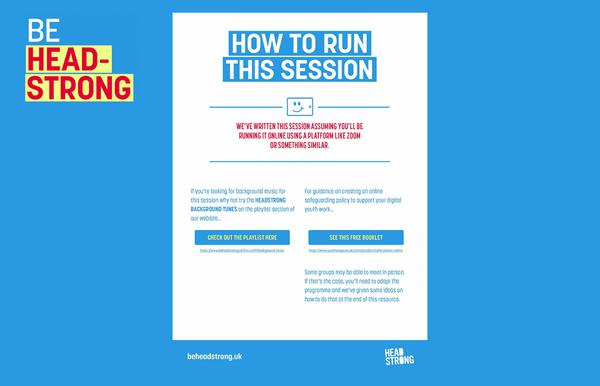The New Hope conference gathered those working with young people in schools for a day of encouragement and inspiration. Dave Walford gives us his 4 take-home points.
The New Hope online schools work conference has now passed, but if you missed out, feel free to catch up on all the different parts of it here. Throughout the day, we were able to hear from some wonderful contributors as they gave us some of their wisdom, insight and challenged us to navigate the current landscape with ‘New Hope’ that comes from God alone. We were able to hear from a variety of perspectives and experiences, and there were so many moments where I felt God nudging me.
So, here are four things I felt stood out to me from the day:
1. "Chaos is not the point of despair but starting place of creativity.”
As Jill Rowe pointed out so beautifully, right now can feel volatile, uncertain, complex and ambiguous – and with good reason: it is. Guidance is changing depending on geography, more and more restrictions are being put in place in order to try and save lives, and there still isn’t a clear definitive guide to what next month is going to look like, let alone next year. Mystery, fear and anxiety seem to be present everywhere you look.
When we look to scripture, we see a different story. In moments of chaos and of turmoil, God isn’t found underneath the rubble and ruins of reality, trapped by the desolation of the things that we have built our lives upon (that aren’t him). We see this clearly from the first page of the Bible, where there is a different story of the relationship with chaos. “In the beginning when God created the heavens and the earth, the earth was a formless void and darkness covered the face of the deep”. God was there in the chaos and from that place, began the entire creation narrative; the birth of life as we know it came from a place of ‘nothing’.
We also see this in the story of Jesus calming the storm. For the Israelites at the time, the sea represented this untameable, unpredictable entity, the living embodiment of pure chaos. The tale of Jesus’ power and control over the symbolic sea is powerful and stands by itself, but there is one thing I find particularly interesting in the way that events are told in the gospel of Matthew. We see that Jesus has a conversation with the disciples in asking about their lack of faith, but differing from the way the events unfold in Mark and Luke, we see that Jesus has this some of this conversation before he calms the storm. Jesus didn’t wait till after the chaos had gone before he spoke, he was content in that moment when everything surrounding them was wild.
In the midst of chaos it can be so difficult to imagine and picture what good can come right now, but the hope that we find in Jesus speaks of a life that is lived to the full, a statement that isn’t bargained on the condition of safety and comfort. On the one hand, vehicles of our youth and schools work that were working well have been abandoned, and progress may have been halted, but on the other hand, all bets are off! There is an invitation that is issued in moments of chaos and despair to try, to fail without judgement, to listen, reassess, relaunch and to put our roots in something that won’t fail.
2. "Hope is the space between the now and the not yet."
We ‘hope’ it doesn’t rain. We ‘hope’ that we can get a haircut before more restrictions are put in place. We ‘hope’ that Peter doesn’t go out on this week’s episode of Bake Off. The way we use hope in everyday conversation reduces it to just wishful thinking, but hope is more powerful than that. As Rachel Gardner mentioned, in this current cultural moment, “hope is saying that this is not okay, but this is not all there is”.
As Christians we have a different understanding of the future. Believing in a coming kingdom, eternal life and a saviour who has rescued humanity from sin and death, hope stands in that space between the now and the not yet. As we see in 1 Thessalonians 4:13, we do not grieve like those without hope, for our hope is present in the pain, is found in the hurt, even in these moments. Our unique perspective gives us a lens through which to look at the future. Rachel expressed that we are called to be vessels of a hope that is different, a “holy hope”. One that doesn’t shy away from the reality and hard truth of what is real but helps point a way to something better.
As Esther Deans stated in her keynote, “always be hopeful for the future, because this is something we have the power to change”. We know the God of transformation and the impossible, but we also have a part to play.
3. Recognise who we are and our influence
The truth is that as leaders we have influence in whatever setting we are in, especially in relation to the young people we work with. As many of the institutions and things they never questioned have seemed to crumble around them, they will be not just be looking at us seeing how we handle this ourselves but looking to us for direction and a guide through these unchartered waters. Now this isn’t to say that we need to pretend that we have it all together and put on a mask, I think it looks more like showing young people how we work this through with God and inviting them to join us. As Christian leaders, we were never meant to have all the answers, but to point young people to the one who is the way, the truth and the life. Dr Lucie Shuker shared a great seminar explaining the importance of experiential apologetics and inviting young people not just to learn about God but to ‘do God’.
4. Hope is active
Another point that seemed present throughout the day was this idea: Hope that is real is not a passive concept, but one that invites us to be active. It is one that demands us to engage and challenge injustice, to be part of bringing God’s kingdom comes in your hometown as it does in heaven. Not just to dream about the future, but to help shape it.
That was always the vision for ‘New Hope’, a space where collectively, we could journey together through these unchartered waters and head towards a future where God’s plan for the young people and children of our country was actualised. As Baroness Elizabeth Berridge stated, “it wasn’t just in the 19th century that God had a vision for education”.
Another theme that was subtly there throughout the day was that hope is active in your context. That we don’t have to wait or work until or build up towards a space where there is hope, or until God had a plan. Hope is active in our communities, in our schools, in our lives.
However, this is by no means an easy task. In hoping, in dreaming, you have to come to terms with the imperfect and challenging reality of the world we live in. Rachel Gardner shared about a recent stabbing on her church’s front steps, and just earlier this week I heard a youth leader talk to me about the devastation of having a young person die in April, and still not being able to help the young people grieve as they can’t meet. Our own planning team definitely had to persevere and come to terms with the bitter truth in our own way as our first run at the New Hope day not quite going to plan (an understatement perhaps). It’s not always as drastic or life-ending as that, but all of us will have experienced loss or trauma in some format during this year.
So, as half term is nearly upon us, the threat of a second lockdown looming, and Christmas not likely to look the same, I’m reminded of the same challenging questions that Phil left us with on the 5th October:
- What is in your head?
What are you learning at the moment that stands out? - What is in your heart?
What is exciting you or inspiring you? What are the dreams and hopes God has placed in you? - What is in your hands?
What do we already have to help make that a reality and what does the first step look like?
You can catch up on all the keynotes and seminars from New Hope here on Youtube.









